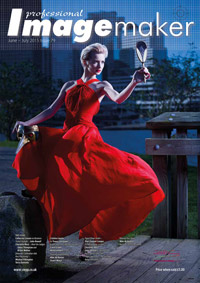articles/Printing/Making-Your-Mark-page2
Making Your Mark - part 2 of 1 2 3 4 5 6 7 8 9 10
by Mike McNamee Published 01/06/2015
Making Your Mark
The favoured medium for adding your marks to a print is a soft pencil. This only works on matt prints. The barytas, lustres and gloss papers are quite a different challenge. Ball-point is an absolute no-no - it fades, bleeds and looks very tacky, even at first. It also can bleed right through a print from the back given a fair chance. Fountain pen inks too are problematic so let's start from the beginning and go through the options.
Pencil
Some people use a clutch pencil armed with a soft lead at about 0.7mm diameter. If a more stylish signature is required then a soft pencil sharpened and shaped into a chisel point will give an italic flow to the stokes of the letters. A 2B pencil is about as hard as you dare to go.
Inks
Assuming that ink is to be used then an old-fashioned dip pen with a slightly broad nib produces a stylish result but some experimentation is needed before you go anywhere near the print! We'll look at inks first, then nibs.
The relationship between ink and nib is complex. Too much flow and you flood the letters, too little and it is hard work to get a neat result. The ink, though, has to last as long as the print and this refines the choice.
Quink Inks
These are the classic fountain-pen inks introduced decades ago and still widely available. They are quite unsuited to ink-jet surfaces as the complex media coating diffuses ink constituents at different rates and can in some instances produce a spectacular yellow rim around your lettering! They can also fade very quickly.
Ink-jet Ink
An obvious choice is to use the same ink as that used in the printer itself. Most cartridges have a residual amount of ink when they are changed out. Save the black cartridge and carefully get the ink out of it - government health warning; this is a hazardous process that can result in a very sore bottom if tried in the kitchen or even worse the lounge; do it in your potting shed and don't wear your white tuxedo!
Another option is to purchase a bottle of black ink from a provider of continuous ink-flow systems. We tried a bottle of PermaJet FS Chrome Universal Black, a medium that is about to be discontinued and so PermaJet kindly supplied the replacement Imagelife ink for us to try as well. Using a legacy nib Brandauer (see later) produced a good clean signature onto baryta papers. The ink was also quite 'leggy' in that we were able to write four lines across an A4 page before the ink ran dry - this compares with just a single line using Quink Ink. This is quite important because one of the things you have to do is make a trial signature before you approach the real print, to ensure everything is running smoothly. If the pen runs dry you are in trouble as your flow is interrupted and it can show!
Ink-jet inks are fundamentally different to all the more traditional types of ink, they are formulated with various organic chemicals as typified by this list from a US patent:
a) 5 to 30 parts ethylene glycol mono butyl ether
b) 0 to 40 parts diethylene glycol mono butyl ether and/or triethylene glycol mono butyl ether
c) 0.1 to 20 parts pigment and
d) 20 to 84.9 parts water
In general then, various forms of glycols are used along with substantial percentages of water. The glycols act as wetting agents, anti-freezes (for transport) and to slow drying to prevent nozzle clogging. Small wonder then that the way they react to a dip pen is both variable and unpredictable!
Please Note:
There is more than one page for this Article.
You are currently on page 2
- Making Your Mark page 1
- Making Your Mark page 2
- Making Your Mark page 3
- Making Your Mark page 4
- Making Your Mark page 5
- Making Your Mark page 6
- Making Your Mark page 7
- Making Your Mark page 8
- Making Your Mark page 9
- Making Your Mark page 10
1st Published 01/06/2015
last update 09/12/2022 14:56:20
More Printing Articles
There are 14 days to get ready for The Society of Photographers Convention and Trade Show at The Novotel London West, Hammersmith ...
which starts on Wednesday 14th January 2026





